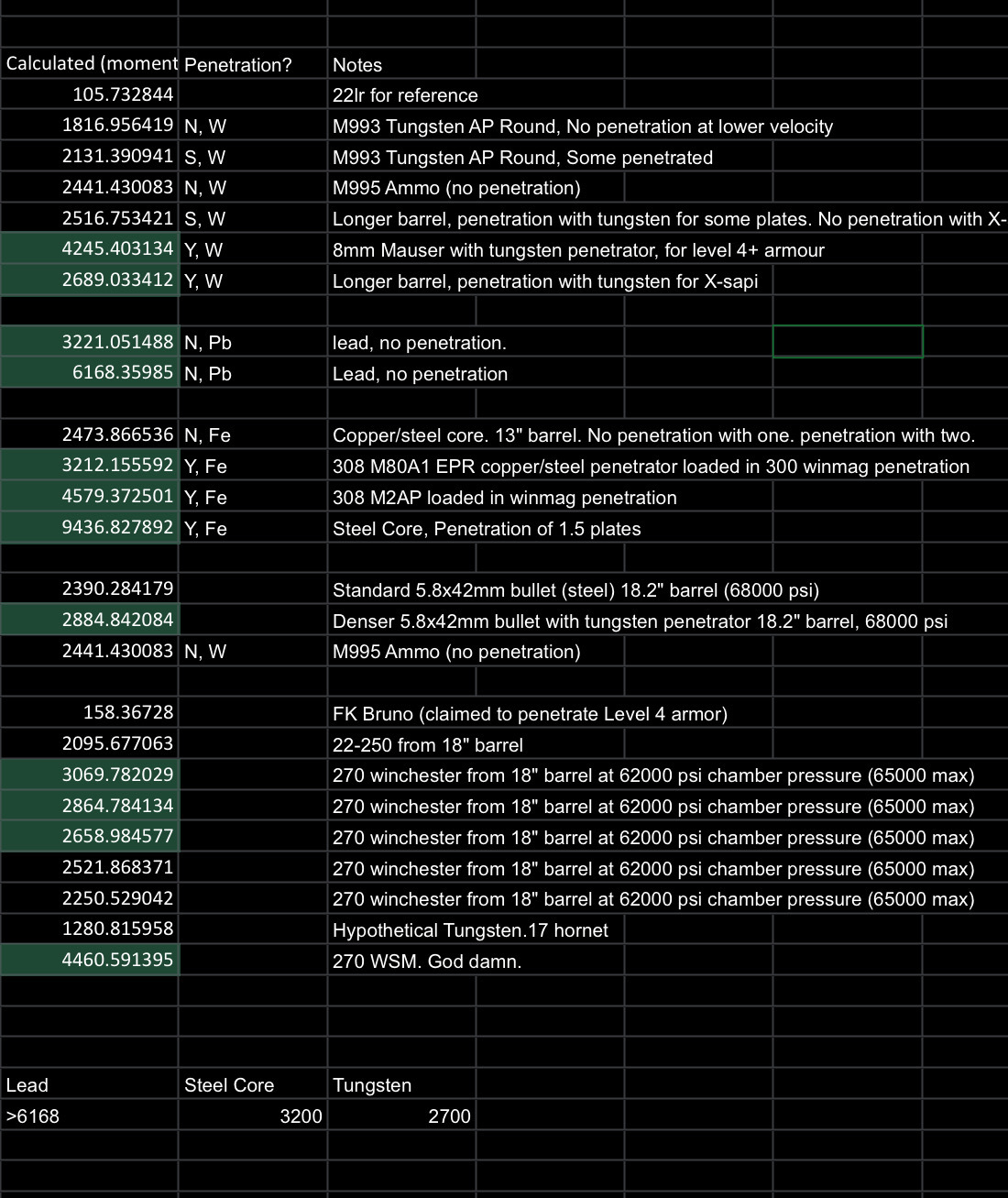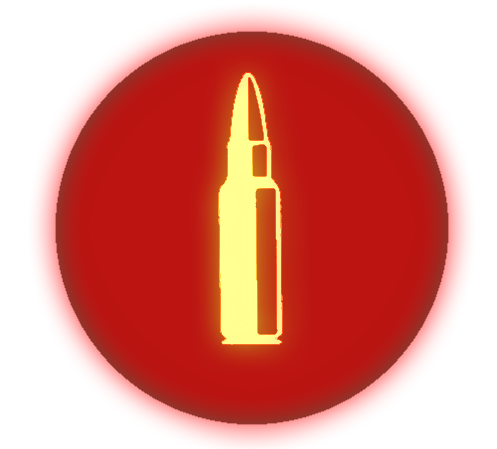The methodology to calculate the level of penetration of a projectile has is to divide its momentum by its area. This number is then squared to make a kind of penetration index. The units are (J*g/m2)/m2. An alternate way is to multiply kinetic energy by sectional density, and divide by cross sectional area.
It should be noted that this simplification holds true for harder materials that’s not assumed to deform, like tungsten carbide penetrators.
https://www.longrangehunting.com/attachments/penetration0802-pdf.274645/
What I then did is watch a whole bunch of YouTube videos and took note of which calibers, at which velocities, penetrated the level 4 plates.
What I learned was that not all plates rated at level 4 are made the same. And there are some plates which are rated higher than level 4. My findings are below:

Please note that the different values come from different barrel lengths, bullet weights and velocities.
In summary, a bullet needs to be 1. Made of a tungsten penetrator with a copper jacket. 2. Have a penetration index of greater than 2800.
Or
- Made of a hardened steel penetrator (>60 hrc), 2. have a penetration index > 3200.
You’re not penetrating any armour with lead bullets.
Note 270 WSM is off the charts. If this round is given a tungsten carbide or steel penetrator, of which you can shape using electro-discharge machining, then it has the capacity to penetrate level 4 armor at range. The length of the cartridge also makes it easier to design semi auto and auto firearms. (Shorter stroke length) though its bulk suggests less ammo capacity.
https:~//m.youtube.com/watch?v=czCgWDuHHOY
Also note that the PLA can make an effective tungsten AP round in their standard caliber without needing any equipment upgrades. (Unlike the US) Though their current copper/steel round isn’t effective with level 4.
Now look up who’s the world’s leading manufacturer of tungsten.
As a final note, most law enforcement or military wear level 3 or 3+ plates, because it’s half as heavy as level 4. So this analysis is probably overkill.

